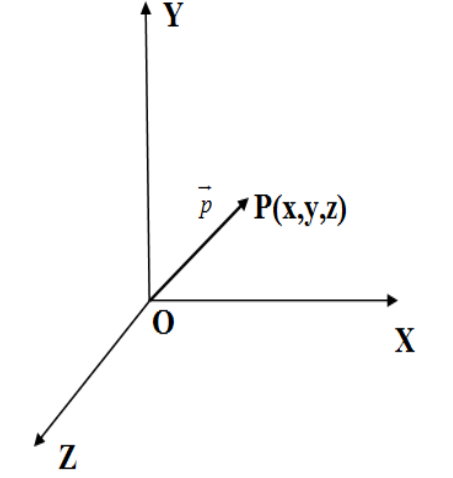Question
Question: Find the position vector of the a point lying on the line joining the points whose position vectors ...
Find the position vector of the a point lying on the line joining the points whose position vectors are i^+j^−k^ and i^−j^+k^. $$$$
Solution
We recall the definition of position vectors. We use the fact that the position vector of any point P that lies on the line joining two points A,B whose positions vector are known as a,b is given by a+λd where λ is any real scalar and d=b−a is the distance vector.$$$$
Complete step by step answer:
We can represent any point in the space P(x,y,z) as vector with original O as the initial point and P as the final point in terms of orthogonal unit vectors i^,j^ and k^ as OP=p=xi^+yj^+k^. This vector is called position vector, location vector or radius vector. We have the rough figure of the position vector p below. $$$$

If there are a=(a1i^+a2j^+a3k^),b=(b1i^+b2j^+b3k^) be two position vectors of two points then the position vector of any point on the line joining the two points is given with a real scalar λas;
